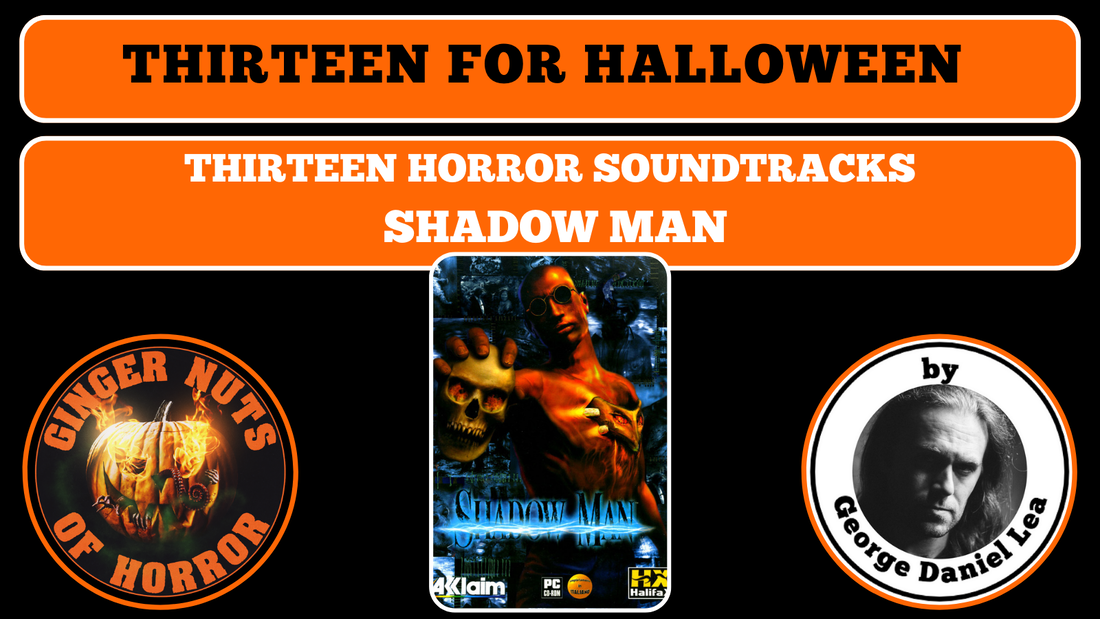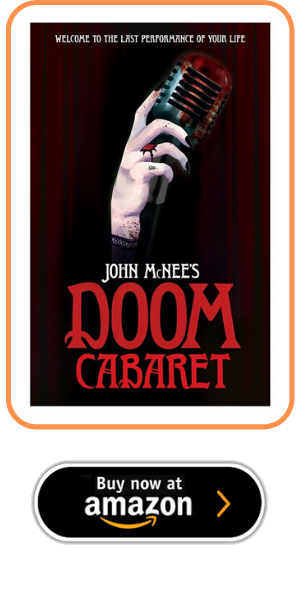it consists of elegiac chords and melancholic strains, conspiring with the notably grim visuals to cultivate an atmosphere of epic dereliction; of waste and barrenness that is metaphysical in scope. The soundscapes of horror are as essential as they are under-remarked upon. The cultivation of atmosphere, communication and evocation of mood (dread, tension, panic) is as reliant upon the aural aspects of any given work in the genre as the visual (arguably even moreso). Whilst this is true of all genres, it's arguably even moreso of horror. Without the correct score, an appropriate soundscape, works of horror are doomed to mediocrity and failure. An appropriately inspired soundtrack can make all the difference between eliciting shudders of dread or derisive laughter. Since the earliest examples of cinematic, televisual and video game horror, this has been quintessentially true, but remarked upon only by those deeply immersed and invested in the genre. Video games in particular, being the youngest of those mediums, has experienced a tumultuous history in terms of its use of sound and music in the evocation of atmosphere: Early examples, being visually crude, often relied upon soundscapes to cultivate horror where it was graphically unlikely-to-impossible. Evolutionary leaps in technology have allowed for ever-more sophisticated audio elements to complement visual factors such as lighting and shadow. The leap to three dimensions that came in the mid 1990s also coincided with an evolution of video game scores and soundtracks. Gone were the simulated and digital sounds familiar to video gamers of the era in favour of full orchestral scores. Video game designers were presented with an entire new suite of tools and opportunities to explore and express narrative; to cultivate and manipulate mood. Nowhere was that more evident than in the blossoming horror genre that, thanks to the likes of Resident Evil, was enjoying a significant renaissance. Acclaim's Shadow Man is, sadly, one of the less well-remembered of the era, having suffered a truly lamentable Sony PlayStation port, thus massively limiting its potential audience. Despite this, those who managed to experience the game on platforms such as the PC, N64 and -later- Dreamcast recall a unique and captivating experience, whose horror was quite unlike anything that had gone before. Drawing inspiration from the VooDoo mythos comic books of the same name, Shadow Man follows the escapades of Michael LeRois, current incumbent of the immortality-granting "Mask of Shadows," an artefact that transforms him into the titular VooDoo messiah and allows him access to "Deadside," the metaphysical dumping ground where everyone goes, without exception, when they die. Hunting the dark souls of five serial killers, Michael seeks to avert the grim prophecies of his forebears and undo the cancerous evil that has taken root at the heart of Deadside in order to bring about an apocalypse that will see both Dead and Liveside (AKA the living world) reduced to a lunatic's Eden, a state where sadists and serial killers are sainted, and where pain is a sacrament to hideous gods. Whilst the game is graphically impressive for its era, its truly epic ambition and visionary scope still runs up against technological limitations. As such, it evinces heavy reliance on composer Tim Haywood's legendary soundtrack to cultivate and maintain its atmosphere. Whilst the era is characterised as one of heady experimentation -from the classic horror cues and situational themes of the Resident Evil series to the discordant, industrial stylings of the latter Silent Hill games-, Shadow Man's soundtrack distinguishes itself as not only unique, but uniquely disturbing. Haywood's work not only emphasises the horror of Shadow Man's nihilistic metaphysics -a situation in which belief, morality and conviction have no place and make no odds as to one's ultimate destiny; we are all collectively just refuse dumped into the mouldering expanse of Deadside-, but also its mythological epicness. Unlike Resident Evil, this is a story whose implications are cosmological; events underway in Deadside might potentially reshape all of reality, and it's this quality that Haywood seeks to capture. Whilst wandering Liveside as Michael LeRois, the soundtrack is minimalist and environmental, consisting of little more than whispering winds, chirping crickets etc. However, when he translates to Deadside -using the conduit of his murdered brother's teddybear-, the score begins in earnest: Fully orchestral, it consists of elegiac chords and melancholic strains, conspiring with the notably grim visuals to cultivate an atmosphere of epic dereliction; of waste and barrenness that is metaphysical in scope. This is the quiet horror of Deadside and of Shadow Man's metaphysics; not the threat of pain or physical mutilation, but of spiritual degradation that comes from realising there is no poetry or purpose in this condition: It is as arbitrary and absurd as the living world, as lacking in wider meaning as any random birth. Tim Haywood's score for the endless tracts, depths and desolations of Deadside encapsulates this quality; a sense of epic scope and mythic significance, yet also of despair and ultimate degradation. Variations on the theme occur depending on environment; some depths take the eponymous anti-hero into ancient VooDoo temples, which have a more bassy, rhythmic theme, redolent of tribal drums and chanting. Elsewhere, he descends into depths of infernal murk and darkness, where the subtlety of the soundtrack echoes with muted voices and instrumental chords that seem to occur somewhere off in the distance, beyond the perpetual veil of fog. But nowhere is the score more notable or distinct than within The Asylum: A metaphysical horror, The Asylum is a palimpsest structure erupted from within the necrotic flesh of Deadside itself, part cancer, part architecture; a Boschean vision of Hell that derives from no earthly tradition or metaphysics, but is the singularly twisted inspiration of the most deviant and perverted souls in existence. In the game's opening sequence, we are introduced to none other than Jack The Ripper, to the strains of Moonlight Sonata, a distorted, inverted version of which becomes the character's theme tune later in the game. An architect and engineer by trade -outside of his more bloody work-, Jack is commissoned by an entity that calls itself “Legion” to design The Asylum; a cathedral to pain and sadism, where serial killers are revered as saints and blody-handed messiahs, where the repulsive work of ushering in Armageddon can begin. Jack's work is a hellish masterpiece; a hybrid of Victorian insane asylum, cathedral and processing factory, it is an impossible feat of non-euclidean architecture, where the endless clanks, hisses and whirs of machinery mingle with cries of pain, whimpers of despair, and the sadistic, bestial exclamations of those responsible for administering the endless feats of agony experienced within. Whilst impressive in terms of its visuals -certainly for the era-, what truly sells the nihilistic horror of The Asylum is its soundtrack: Consisting of several distinct areas, from the transitional industria of The Cageways to the disturbing, perverted sanctity of The Cathedral of Pain, Tim Haywood's score is as schizophrenic and disturbing as the setting itself, marrying industrial and surgical sounds to strains of discordant music, the dripping of blood, cries of pain and hymn-like choruses. As in the architecture of The Asylum itself, various, ostensibly contradictory or clashing themes marry in its soundtrack, creating a sense of infernal sanctity that is as distressing as it is unique. It would be several more years before Silent Hill would make its debut and rewrite the rules for horror video games (not least of which due to a soundtrack unlike anything had ever heard in the medium), but Shadow Man certainly deserves notice in this regard. To this day, its score is a unique cocktail of disturbingly clashing elements, that elevates the game to new and terrible heights of disturbia. CHECK OUT TODAY'S OTHER ARTICLES BELOW The Heart and Soul of Horror Promotion WebsitesComments are closed.
|
Archives
April 2023
|












 RSS Feed
RSS Feed

